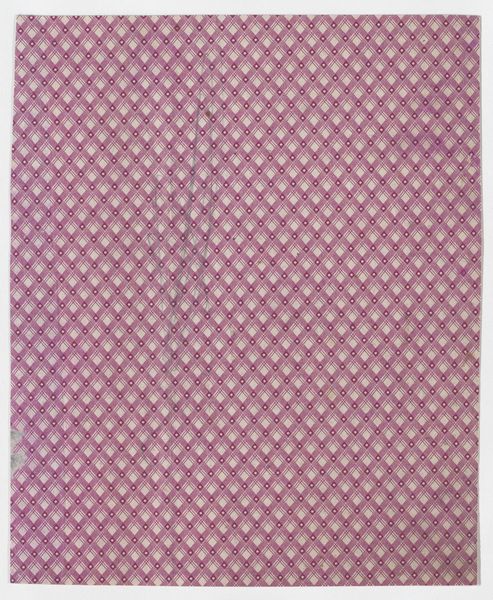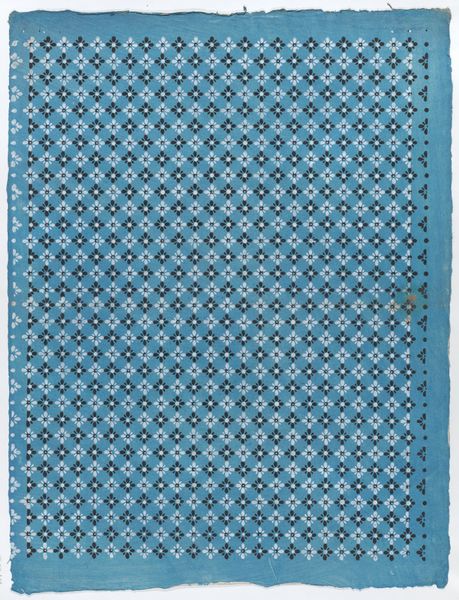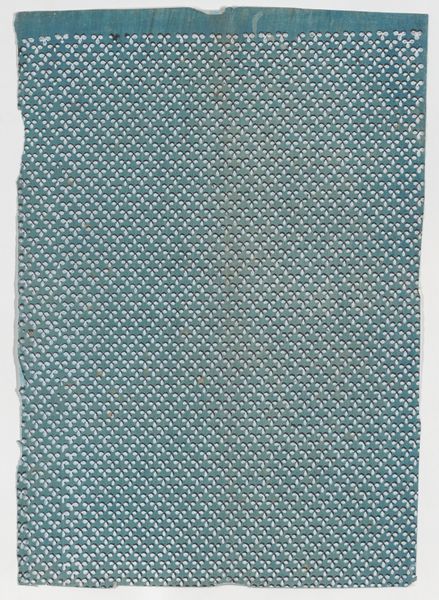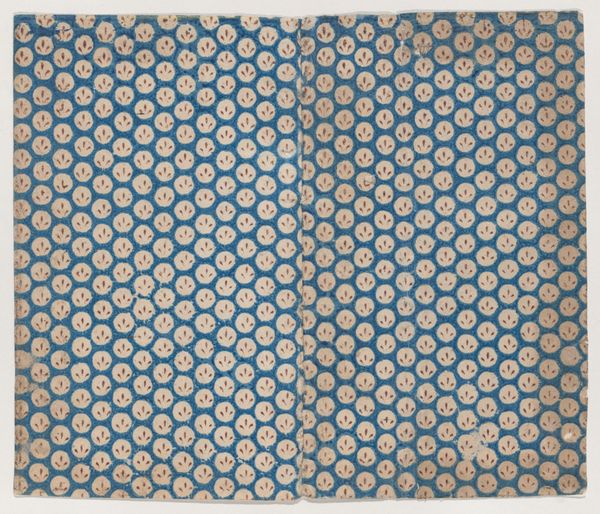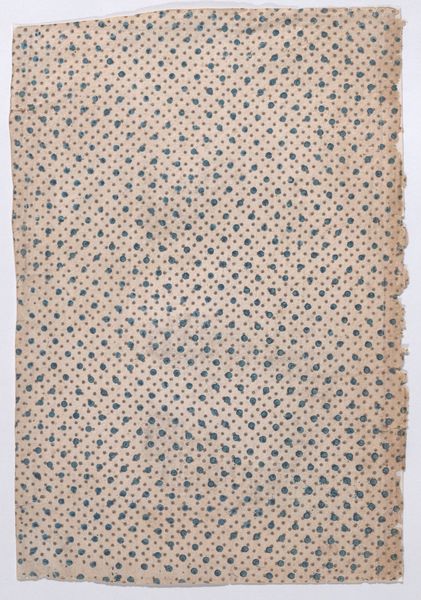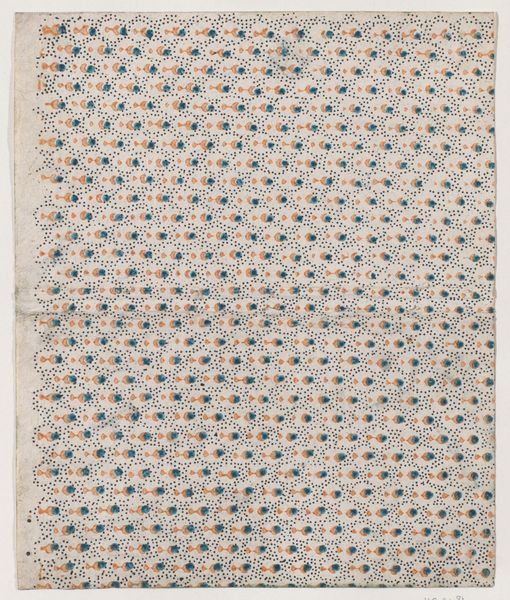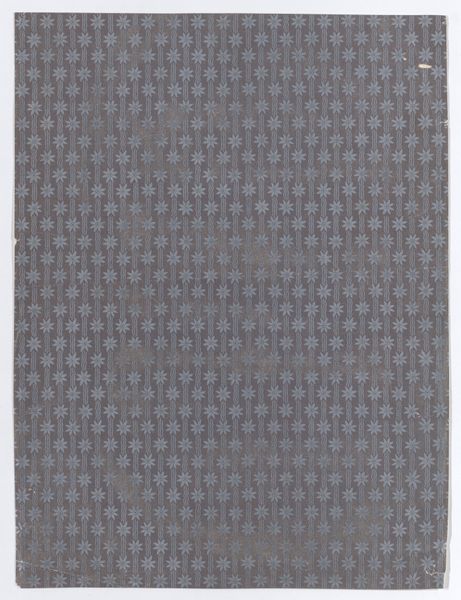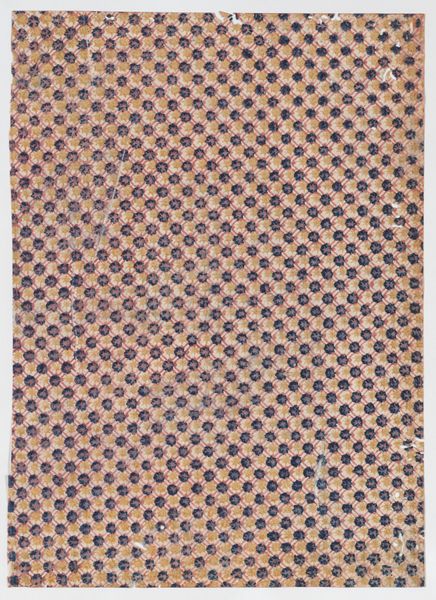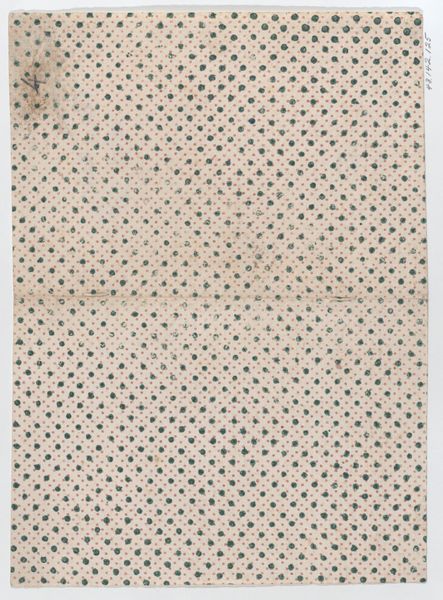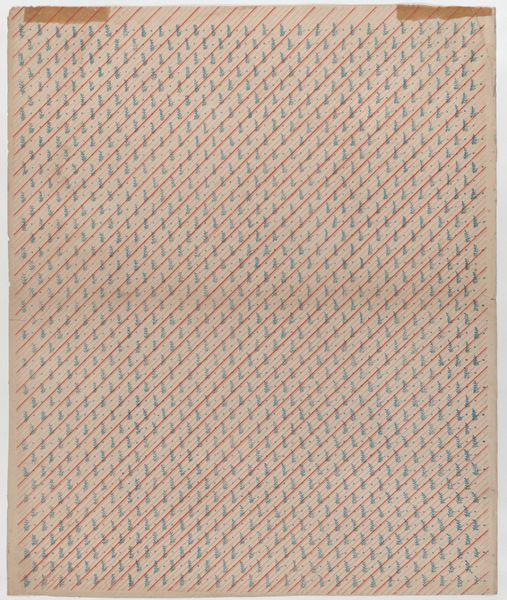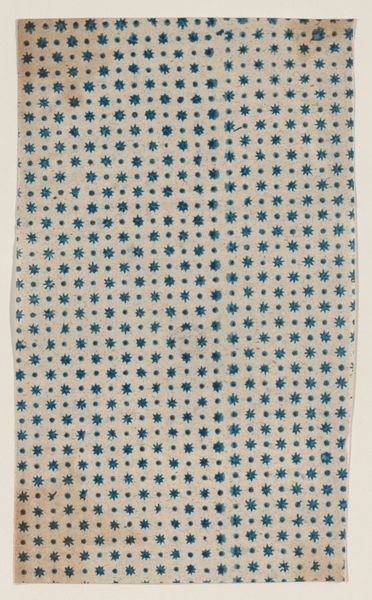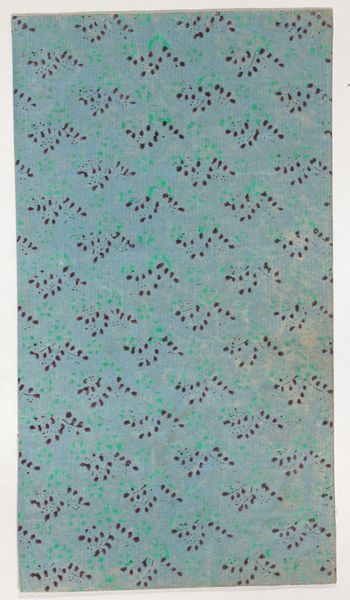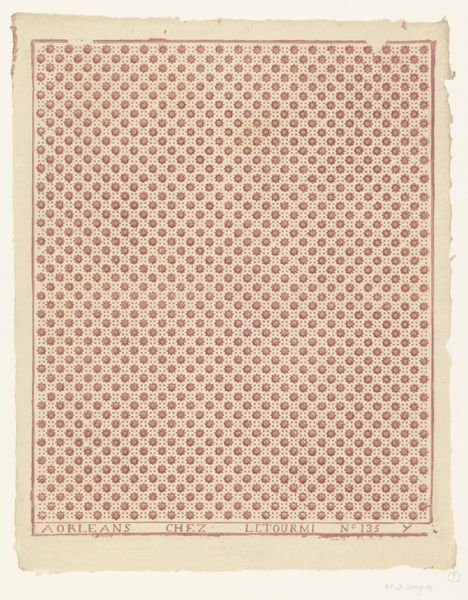
drawing, print, textile
#
drawing
# print
#
textile
#
geometric pattern
#
repetitive shape and pattern
#
organic pattern
#
repetition of pattern
#
vertical pattern
#
regular pattern
#
pattern repetition
#
textile design
#
decorative-art
#
imprinted textile
#
layered pattern
Dimensions: Sheet: 13 3/16 × 18 1/8 in. (33.5 × 46 cm)
Copyright: Public Domain
Curator: This piece, entitled "Sheet with an overall dot and floral pattern," comes to us from an anonymous artist, sometime between 1775 and 1875. It's a fascinating example of textile design, now residing here at the Metropolitan Museum of Art. Editor: Wow, my first thought? Seashells! It's like gazing into a tide pool, that muted turquoise overlaid with rusty little starfish. There's a dreamy, meditative quality about it. Curator: Exactly! These types of printed textiles offered relatively inexpensive ways to incorporate stylish design into everyday life. Notice how the seemingly random arrangement of floral motifs is carefully calibrated to create a unified surface. We can consider its function: Likely meant as decorative fabric, perhaps even an early wallpaper substitute. Editor: Substitute, yes, but think about the hours and skill poured into each pattern block, or even into hand-painting. There's a haptic quality to patterns like this. You want to touch it, to feel the ghost of the artist's hand repeating, repeating… almost a mantra. Do you imagine entire workshops devoted to such textiles? Curator: Undoubtedly. And with the growth of industrial printing techniques throughout the 19th century, hand-crafted pieces such as these became increasingly valued for their distinct material qualities, like the texture and slight imperfections. We might ask, how did these goods circulate and what social meaning did their patterns carry? Editor: Meaning… It also strikes me as intensely private somehow, this object. Meant for intimate spaces, bedrooms and nurseries. Perhaps this served as backdrop for stories shared in hushed voices, an archive of memories stitched into the weave. Curator: Absolutely, we see these pieces less as individual artworks, but rather as windows into broader patterns of labor, production, and taste of the time. And questions of access and cultural values as well. Editor: Textiles carry the stories, layer by layer. Gazing at it makes me reflect on how daily beauty is vital—these patterns whispering resilience through history, against repetition and banality.
Comments
No comments
Be the first to comment and join the conversation on the ultimate creative platform.
